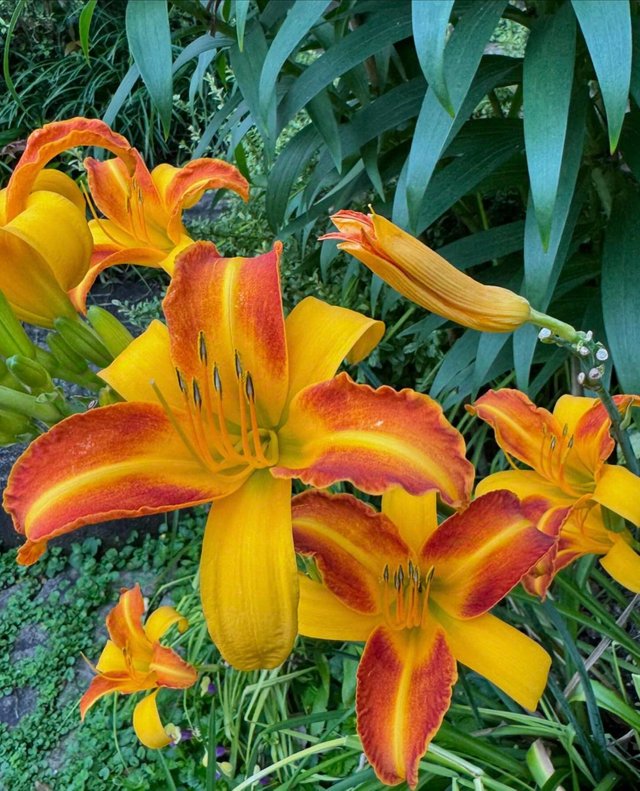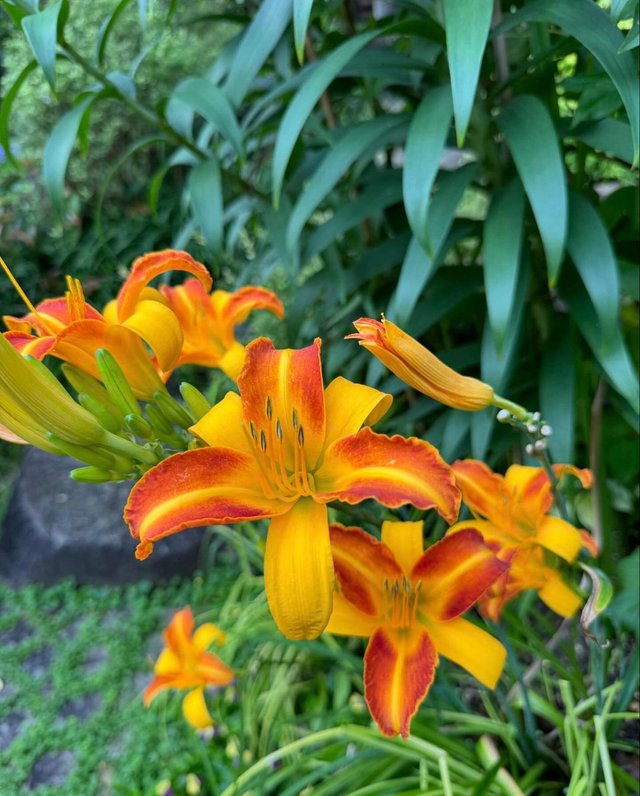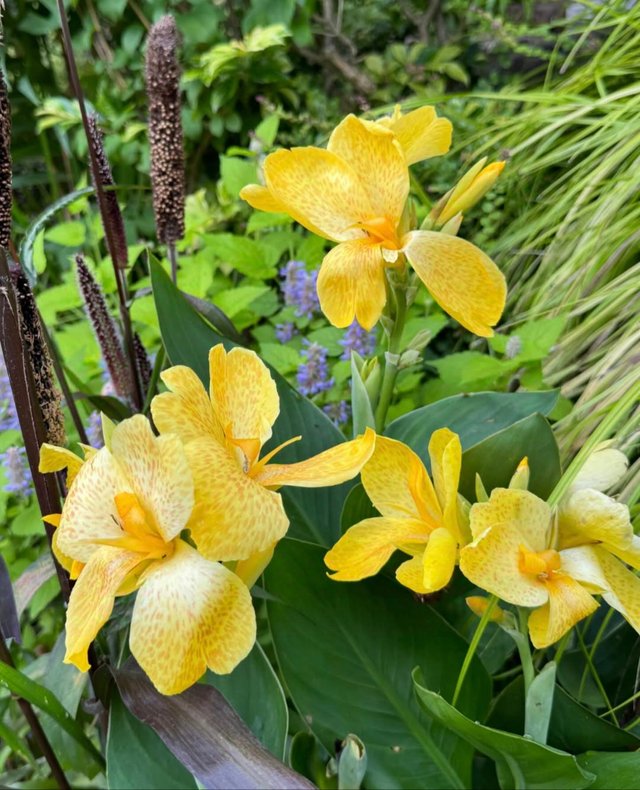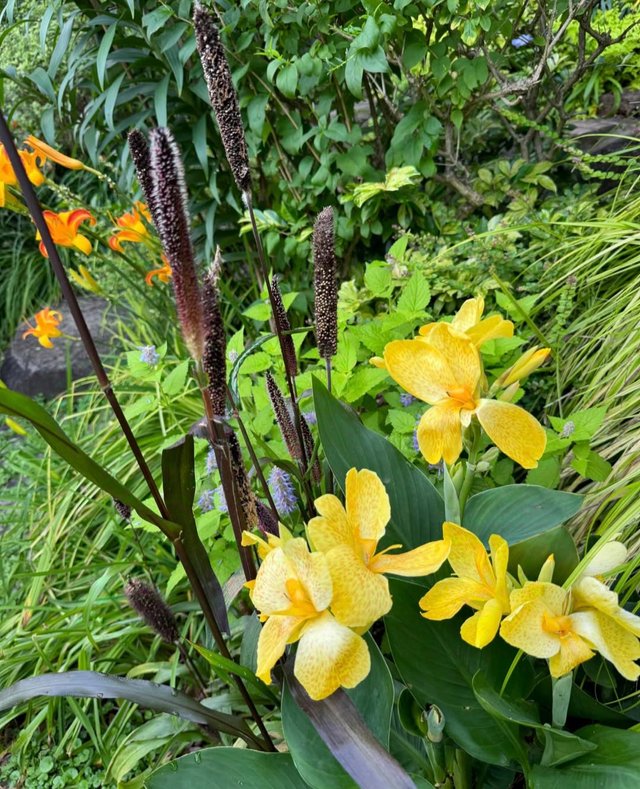The Vibrant Beauty of the Orange Day-Lily




The orange day-lily often called the "ditch lily" for its habit of flourishing along roadsides and fields, is a strikingly beautiful flower known for its resilience and charm. Its vibrant orange petals, often tinged with golden hues and deep red streaks, make it a standout in any garden or wild setting.This perennial flower gets its name from its blooms, which last only a single day. However, the plant compensates for this fleeting beauty with an abundance of buds, ensuring a continuous display of flowers throughout its blooming season, typically from late spring to midsummer.
Stalks can grow up to 2-4 feet tall, topped with clusters of blossoms.The trumpet-shaped flowers have six delicate petals, forming a striking starburst pattern.Long, arching green leaves provide a lush backdrop, adding to its ornamental appeal.The orange day-lily is a gardener’s dream due to its hardy nature and minimal maintenance requirements. It thrives in a variety of conditions, from full sun to partial shade, and tolerates a wide range of soils. Its robust root system makes it drought-resistant, an ideal choice for naturalizing areas or filling difficult garden spots.
Space them 18-24 inches apart to allow for proper growth.Water regularly after planting, but established plants require little irrigation.Divide clumps every few years to prevent overcrowding and encourage vigorous blooms.In many cultures, the orange day-lily symbolizes positivity, courage, and renewal. In Chinese tradition, it is associated with motherhood and maternal love. Its enduring presence in folklore and art reflects its timeless appeal.Aside from their aesthetic value, orange day-lilies attract pollinators like bees, butterflies, and hummingbirds, supporting local ecosystems. Their sturdy roots also help prevent soil erosion, making them useful for stabilizing slopes and stream banks.
While undeniably beautiful, the orange day-lily can become invasive in some regions, outcompeting native plants. Gardeners are encouraged to manage its spread responsibly by regular pruning and avoiding planting in sensitive ecological areas.The orange day-lily is more than just a flower; it’s a celebration of nature’s resilience and beauty. Whether adorning a garden or brightening a wild landscape, its glowing petals remind us of the fleeting yet enduring moments of joy in life.